2022 Census in the field
Careiro da Várzea: the Census in riverside communities in Amazonas
October 31, 2022 10h00 AM | Last Updated: November 03, 2022 10h59 AM
Highlights
- • Conducting the Census in Careiro da Várzea (AM) demands planning to deal with dry rivers observed at this time of the year and, also, with the difficulties of crossing the river and the distance between housing units, most of which are located in rural areas.
- • Residents report that one of the main obstacles faced by the population is the access to potable water, mainly during river drought.
- • Also, the Community São Sebastião do Paraná-Mirim has a healthcare facility, but only with a room for basic procedures, and residents lack proper medical support in the locality.
- • In the Community, enumerator Maria da Glória has to overcome difficulties typically observed in the rural area so that she can conduct Census interviews: the heat, the distance separating housing units, ladders and so on. She says she does not see those as problems, nevertheless.
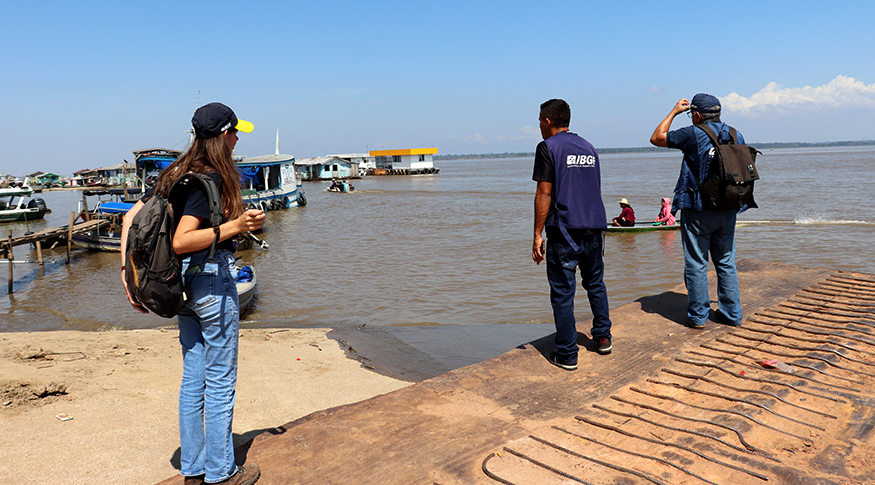
Living in the municipality of Careiro da Várzea, in Amazonas, means facing the river floods and drought every year. Also, almost all the housing units there are located in rural areas, far from each Other, and some of the houses can even change places as one of the singularities of the region is floating homes, shanty boats supported by tree trunks and built with wood pieces, over the rivers. In the Population Census, the challenge is travel many kilometers down the river, and also go on foot, dealing with the drought that gets more severe every day at this time of year, in order to count each resident and portray their reality by means of statistics.
It takes a 30-minute trip on a small motorboat to get to Careiro da Várzea, departing from the capital, Manaus. On the way, we see the beautiful landscape of the Meeting of Waters of Negro River and Solimões River (this one being the upper part of the Amazon River in Brazil), where one can often see porpoises swimming. Once in the municipality, another 30 minute trip crossing Solimões and Paraná do Curari Grande Rivers leads us to the community of São Sebastião do Paraná-Mirim, one of the enumeration areas of the municipality.
“Knowing our reality is essential!”
The coordinator of the Census in Careiro da Várzea, Édina Thomé, explains that planning for the work at the IBGE was conceived to start from the enumeration areas near downtown and, also, from the areas where drought begins first. “Knowing our reality is essential. We began in rural enumeration areas, and that generates a bigger demand of work because the logistics is more complex and supervisors of the municipality have monitored all the sectors since the start of data collection, and this logistics has been difficult since the beginning of the Census.”
Working as an assistant to Édina in the Census in Careiro da Várzea, the census agent Nailson Fernandes is responsible for monitoring the work of his colleagues in the municipality. He told us this is his second time in the Population Census, because, in 2010, he was also an enumerator in the municipality. According to Mr. Fernandes, the technological innovations in the Census represented a major advance since then and that “guarantees the quality of information; and coverage of the territory”. But something very important has not changed: “almost the entire team live in the municipality; for this reason, we know They are doing their best.”
Dealing with the flood and the drought
When one gets to the community, it is possible to notice that, due to the drought, homes get more distant from the river, and, also, relatively far from each other, so it is necessary to walk long distances to visit them. One of the first houses visited by the enumerator Maria da Glória, in the São Sebastião Community, is the home of Denison da Silva, who lives together with his parents and brother. The house of the family was built more than three meters over the floor, in order to avoid being affected by the floods, but, even so, he says that on some occasions the housing unit gets flooded: “see the height it reaches, look”, the resident shows us. “It is so bad to be inside a flooded house, isn’t it? It is even worse because we have a small child living with us.
Denison answered the sample Census questionnaire, with 77 questions and, although it is longer than the basic one, he says it was “easy to answer”. The Young man believes the information obtained in the 2022 Census “will help the government look at people’s reality more closely.” He says that something that needs to be changed in his community is the access to water in housing units. “It is okay for us because there is a lake nearby and we pump water, but many people face several difficulties during the drought,” he explains.
This way, this family like many others in the community, does not have access to piped water. They have, however, pumps to get water from the river and, for this reason, have access to water, though not filtered or treated. For drinking, families buy mineral water from a grocery store some kilometers away.
Census agent Nailson Fernandes explains that, even during floods, Careiro da Várzea faces problems to have potable drinking water. “The ideal would be distribution from a general system because most people here work in agriculture, so, not having water is very complicated,”
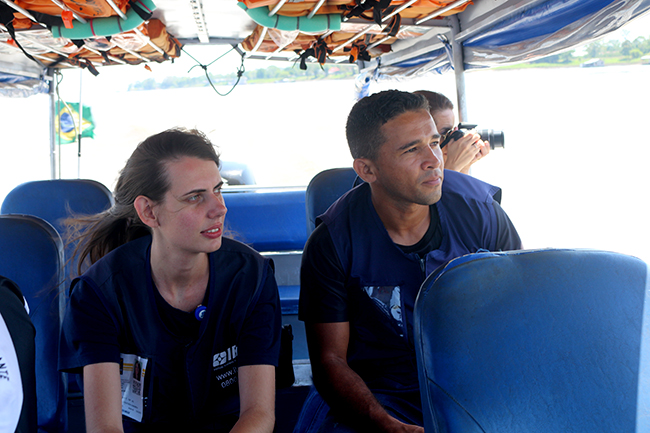
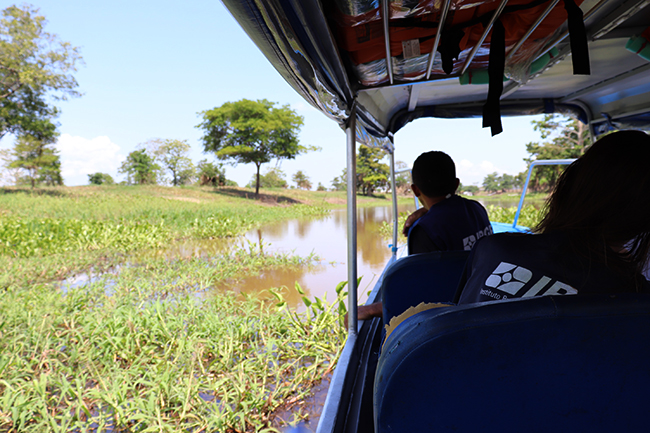

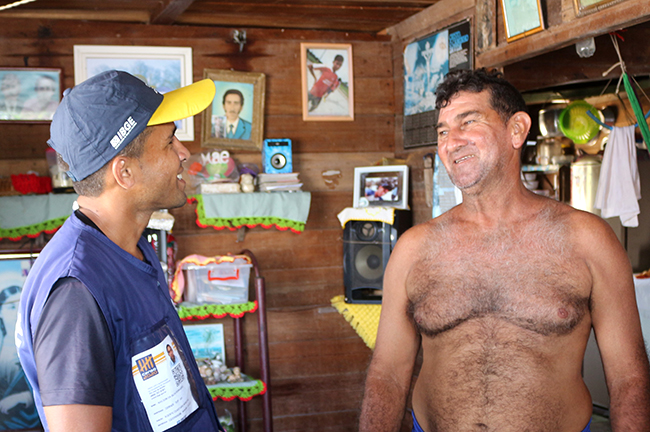
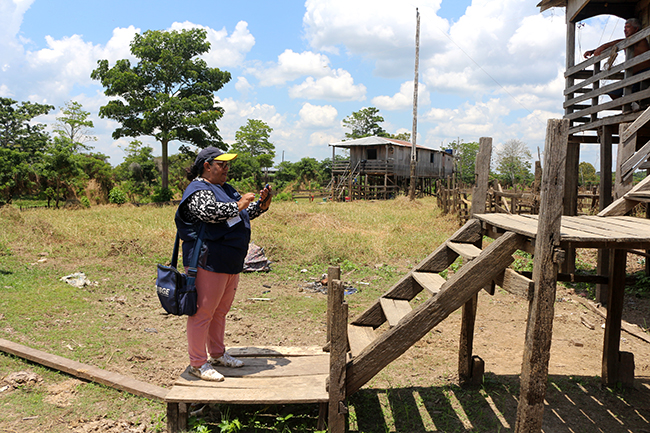
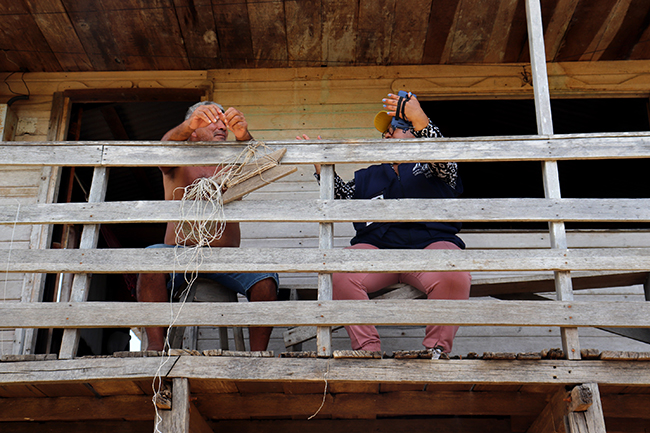
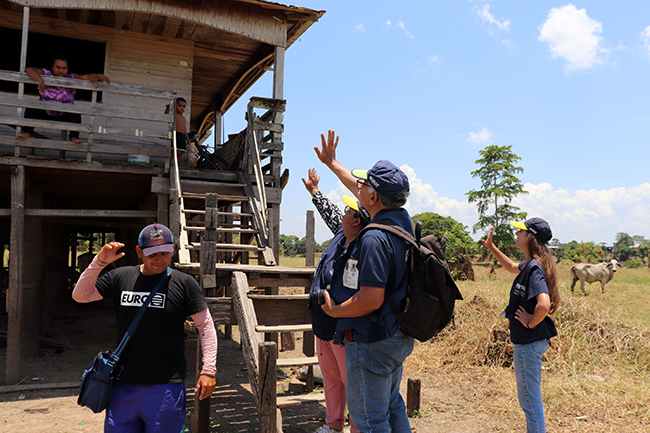
In search of better health
The resident Ângela Maria watches from her window as her husband answers the Census, in the porch. They have lived in the same housing unit for more than 20 years, in the community São Sebastião do Paraná-Mirim, and she says the greatest advance in the community is the start of electricity, but she does not even remember when that took place. She says it would be ideal to have a “better healthcare facility; it would make things easier, because ours has very basic services.”
Ângela has just had a cataract surgery and has to go to Manaus for appointments with her doctor. She gets emotional when she recalls losing her right eye, and adds she has low vision in the left eye. “I cannot do almost anything… My husband has kidney stones, he needs a surgery too, so we cannot plant anymore or raise cattle. But we still go on...”. Despite the difficulties, Ângela says she prefers living in the community than in Manaus: “it is fresher her, but very hot there.”
She thinks “the Census can help because the government can be informed all the things we need. We would like to have piped water, roads, a better healthcare facility.”
Come hell or high water
The enumerator Maria da Glória, responsible for conducting the interviews in the São Sebastião community, said she was very interested in working in Careiro da Várzea, and get to know new places. She lives in Manaus, but says she has worked as a teacher, in the surroundings of Careiro for about 12 years, and, although she is far from her husband and daughter during the Census, she is “happy to be contributing to the enumeration.” The enumerator “will do anything to overcome difficulties dealing with the technology” of the mobile data collection device (DMC) of the Census, so that she can do her job “the best way possible,” she highlights.
Maria has been spending some time in the community to conduct the Census, and it takes her 20 minutes by boat to commute from home to the community. Every day, she gets there at 8 am and leaves at about 5 pm. Maria says she sees no problem in facing difficulties in the rural area, but that she was afraid of making some mistakes when interviewing the residents. “I can’t say I’m not afraid of being bitten by a snake. I wear boots. There are enraged bulls, we see them sometimes, and they may really come towards us; we also Walk in the sun, on the mud…but that’s not a problem to me. My real difficulty is technology because i don’t practice, and the system asks us to adapt. So, my supervisor came and taught me everything, he was very patient.” And she adds “whenever I have a doubt, I call Nailson”.
In her work, Maria noticed a characteristic of part of the riverside population of Careiro da Várzea: spatial mobility related to the status of rivers. “In periods of drought, they build the house: gather 15 people and, in three or four days, it is ready. When the flood approaches, they sell the house,” says the enumerator, who sometimes finds occasionally-sed housing units in a given area. “In the periods of flood they can place a buoy under the house and move it somewhere else.”
Maria likes her job as an enumerator, and she says When her mission in Careiro da Várzea is over, she will go back to Manaus: “except in case the Census still needs me somewhere else! I’m in (laughter)!”
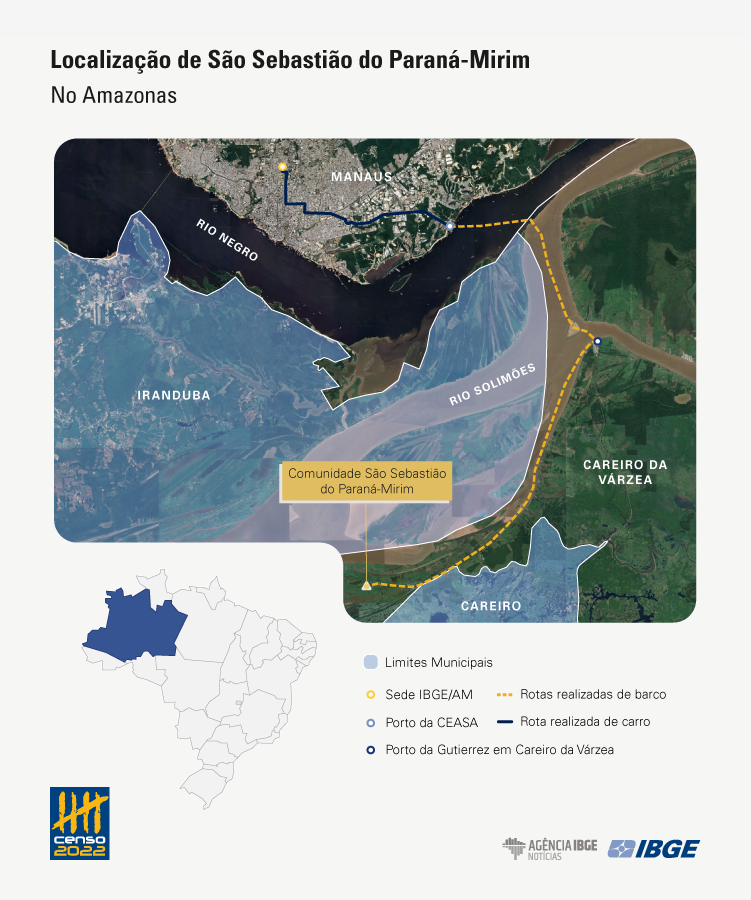
Floating homes
Going back from São Sebastião do Paraná-Mirim to the Careiro da Várzea ferry, we see many floating homes. Luís Braga de Souza lives in one of them, with his wife and son, and they have already been visited by the enumerator. He says his family lived in a common house before, on land, but that was land affected by river erosion, and that “took the family home away”. So, they built a floating house. “Now the river can flood, get dry and if we fight with our neighbor, we can just move,” says Mr. Souza.
He says that when the river is dry, they really move, but down the river, because the place where they are, now gets dry “and when it floods again, we come back here, to the very same place,” he explains.
Mr. Souza reports that the main difficulty is the drought, because of lack of water for basic needs. “It would be nice to have artisan wells to provide water throughout the year, because we try to find it in other places, but it is difficult.”
Besides, the resident also spoke about the need of improvements in health services: “we need a better health facility. We have to go to Manaus whenever there is a more serious problem. My brother had a heart attack some days ago and it took him three days to get to Manaus and have an appointment.”
Most of the year he works in fishing and says that, while the drought does not come, he can make a living on that, but, during the closed season, he needs alternative jobs. “No one here has a fixed income. We take every opportunity possible to work, and life goes on like that.” In spite of that, he says life is good there, and that “we have no problems, there are no thieves because one takes care of the other”. And that he “wouldn’t change this life.”
For census agent Nailson Fernandes, the Censo makes him realize “how urgent it is to have those data updated and made available, because the population here is hardworking but They need public policies a lot.” Mr. Fernandes believes that “When we see the Census results, the percentage of persons without sewage system, water from a general system, and even without a bathroom in their home is very big.”
Census in Amazonas
For the superintendent of IBGE in Amazonas, Ilcleson Mendes, conducting the Census is a “naturally complex and challenging activity”. He says the challenges of urban centers are common, and mentions the resistance of residents, insecurity among the population, challenges in public transportation. However, in the rural area, there are more striking differences. “In Amazonas, we have to cross rivers for hours and hours, without any means for communication, until we get to the community, to the housing units.”
In this respect, the superintendent highlights that the drought that hits the state, this time of year. “This year there is a very severe drought in many localities, so we received videos from enumerators having to push their boats in areas Where the water level is very low; videos of enumerators having to cross waterfalls, so all these situations make the census in Amazonas a challenging experience, demanding a lot from our team and our enumerators.”
Despite the difficulties that include the logistics to traverse the territory and also people’s refusal to answer the Census, the superintendent considers that “Census in the state is at a very good pace, way above the national average.” According to him, the team is adopting varied actions aiming at dissemination and awareness raising of the population in order to reverse refusals and finish the enumeration.
For all these reasons, Mr. Mendes also makes a point of thanking all the enumerators: “we should always call attention to the excellent job they do, and we reaffirm our gratitude.”





















